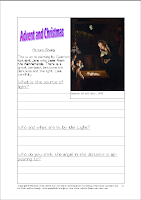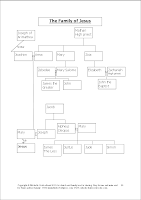 Resources to help children remember those who have gone before them.
Resources to help children remember those who have gone before them.
My father, God rest his soul, fought in WWII. He was drafted at age twenty along with his brothers to serve and protect his country in the armed forces. He always felt it was an honour. He never spoke about the fear he felt, but only of the obedient duties that he and his platoon performed. Growing up, I remember seeing war photos that my dad had brought back with him from the war depicting the many prisoners and horrors he observed in the concentration camps in Germany. As the army tanks rolled down the streets, his photos showed bodies disrespectfully strewn on the sides of the road and terror on the faces of men, women and children. At age ten, I had truly come to understand the phrase of William Tecumseh Sherman, "War is hell." And yet, many of our fallen brothers and sisters have been forgotten by the present generation.
Let us help our children remember those who have gone before them to afford them and us the luxury to be safe and free, to be Christians, as well as to be able to homeschool our children. In today's world of video games depicting glorified violence without consequence, misplaced reverence of pride, and morally numbing activities that confuse children and adults alike about their own identities as human beings, men and women, citizens and Christians - I'm sure my father would agree that he did not offer to lay down his life for this degeneration of humanity. We can remember the past and current sacrifices of peacekeepers and veterans by choosing to do a few of the activities below.
November 11th - Remembrance Day, Armed Forces Day, or Veteran's Day - is a day to remember all those who have gone before us securing our rights and freedoms and those of others as well. It is also affords us a formal opportunity as honour those who are still serving and peacekeeping around the world.
Here are a few resource ideas to help you celebrate this day in your family.
1. Pray and attend Mass.
As our Pastor suggested to us, attend Mass on the November 11th and offer Holy Communion for the departed souls who have died in war. Their souls should also be remembered with your daily prayers all November for the Holy Souls.
2. Observe a moment of silence and reflection.
In Canada, the population observes the designated moments of silence of the eleventh minute, of the eleventh hour, on the eleventh day, of the eleventh month. For just a few moments, we are encouraged to stop and be thankful that others that have gone before us were courageous, honourable, obedient, and selfless.
3. Create a visible reminder.
Whether you place family photos of loved ones past on the fireplace mantle or paint a picture of a field of poppies, encourage your children to remember this important day in a way they can find meaningful. Perhaps you may want to create a bouquet of red paper poppies with the name of family or friends who have served or are still serving in peacekeeping missions. Place your bouquet in a prominent place and pray the rosary for those shown on your flowers.
 4. Read through the poem, In Flanders Field by John McCrae.
4. Read through the poem, In Flanders Field by John McCrae.
You can find it at the bottom of this post. Reading through the poem can not only be a little lesson on how to read poetry and identify rhyme scheme, but it is also an opportunity to better understand the role of the poppy used for celebration and memorial services on Remembrance Day in Canada.
Perhaps you would like to use this as copy work? We have some trace copywork sheets just for this purpose in print as well as cursive.
 5. Learn about St. Maximilian Kolbe.
5. Learn about St. Maximilian Kolbe.
This inspirational saint was a Polish Franciscan Friar who volunteered to die in the place of a stranger while he was held in the Nazi concentration camp, Auschwitz, in Poland. You may want to print out our St. Maximilian saint collector trading card or perhaps complete a My Book Mini-book about him using your favourite resources at home or from the Internet.
Download our
Saint Maximilian Kolbe Saint Trading Card.
Download our
Saint Maximilian Kolbe Mini-book.
Download our
Saint Maximilian Kolbe Spiritual Copywork.
 6. Think about soldiers as individuals.
6. Think about soldiers as individuals.
Using our graphic organizer template, note the virtues or positive attributes (adjectives) of the image pictured in the centre. There is also a blank template for you in case you would like to place or draw a picture of a military hero - a family member, friend, or public figure - and note the virtues or positive attributes that this person personified.
7. Learn more about the holiday and its meaning.
Here are a few ways that you can learn more:
-Talk to a veteran or schedule one to come and speak to your homeschool group or co-op. Veteran's can be found in almost every parish and retirement community. They are usually eager to share their stories and experiences with others especially young people who show interest.
-Visit a museum to learn more about your local history and veteran's from your area. Our town is lucky enough to have a memorial museum where visitors can see authentic photographs, artifacts, maps and more from the WWI and WWII. Local veterans are highlighted and honoured and the museum is run by the veterans.
-Borrow child friendly books from your local library such as
Truce: The Day the Soldiers Stopped Fighting by Jim Murphy or
A Poppy is to RememberLightburn.
Let us always strive to remember, honour and pray for those who have gone before us in obedience, courage and love.
I hope you find these resources helpful.
Blessings,
Kalei
In Flanders Field
by John McCrae
In Flanders fields the poppies blow
Between the crosses, row on row,
That mark our place; and in the sky
The larks, still bravely singing, fly
Scarce heard amid the guns below.
We are the Dead. Short days ago
We lived, felt dawn, saw sunset glow,
Loved and were loved, and now we lie
In Flanders fields.
Take up our quarrel with the foe:
To you from failing hands we throw
The torch; be yours to hold it high.
If ye break faith with us who die
We shall not sleep, though poppies grow
In Flanders fields.
PRAY FOR THOSE WHO HAVE GONE BEFORE US . . .
Eternal rest grant unto them, O Lord,
and let perpetual light shine upon them.
May the souls of the faithful departed,
through the mercy of God, rest in peace. Amen.
 Advent is upon us and what a better way to celebrate it than with a little lesson perfect for family learning. Advent and Christmas, People and their stories is a great little lesson written by Shell of
Thinking Love, No Twaddle blog.
Advent is upon us and what a better way to celebrate it than with a little lesson perfect for family learning. Advent and Christmas, People and their stories is a great little lesson written by Shell of
Thinking Love, No Twaddle blog. 

















